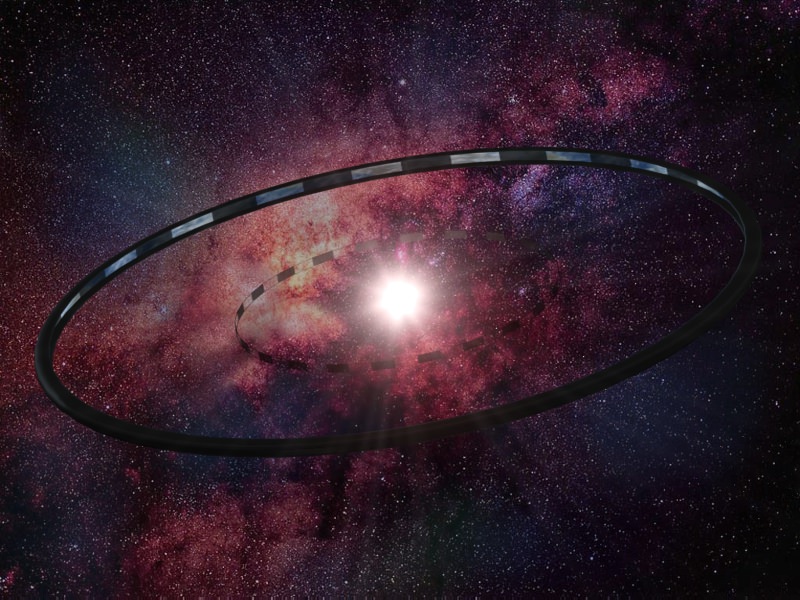Did scientists find a giant alien structure around KIC 8462852? Probably not, but if they did, what would these structures look like?
Continue reading “What Are Alien Megastructures?”
Could We Terraform the Sun?
In the list of crazy hypothetical ideas, terraforming the Sun has to be one of the top 10. So just how would someone go about doing terraforming our sun, a star, if they wanted to try?
In our series on terraforming other worlds, we’ve covered Mars, Venus, the Moon and Jupiter. Even though I solved the problem of how to terraform Jupiter (you’re welcome, science), you wanted to take things to the next level and you demanded I sort out how to terraform the Sun. Seriously? The Sun. Fine… here we go.
Let’s see what we’ve got to work with here. It’s a massive ball of plasma, containing 333,000 times more mass than the Earth. It’s about 74% hydrogen and 25% helium with a few other trace elements. There’s no solid surface to stand on it, so we need to fix that.
The average temperature on the surface of the Sun is about 5,500 Celsius, while the average temperature on Earth is about 15 C. Iron boils at only 2,800 degrees, so… that’s probably too hot. We’ll need to cool it down.
The gravity on the surface of the Sun is 28 times the gravity of Earth. If you could stand on the surface of the Sun, which you can’t, you’d be crushed flat. Okay, so we’ll add reduce the gravity… check.
There’s no breathable atmosphere, there’s no solid ground, the Sun generates deadly X-rays. Oh, and don’t forget about the terrible sunburns from the ultraviolet radiation.
So, what’s the list? Hot fire unbreathable pressure cooker goo surface gravity crushing machine. Sounds impossible, or does it?
First, the gas. As we covered in a previous episode, scientists have actually considered ways that you might extract the hydrogen and helium off of a star like the Sun, known as “stellar lifting”. There are a few ways you could work this. You could zap the surface of the Sun with a powerful laser, increasing the speed of solar wind in that area, forcing the Sun to throw its mass off into space.
Another method is to set up powerful magnetic fields around the Sun’s poles, and channel its hydrogen into jets that blast out into space. I’m not sure how you actually set up those magnetic fields, but that’s not my problem.
Once you’re done with the Sun, you’ve stripped away all its hydrogen and helium gas. What are you left with? About 5,600 times the mass of the Earth in heavier elements, like oxygen, silicon, gold, etc. Great!
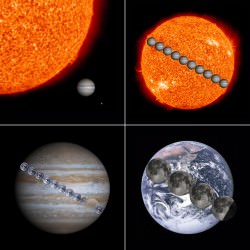
Except 5,600 sounds like a lot. Jupiter is only 316 times the mass of the Earth. We’re looking to reform a “planet” with more than 10 times the mass of Jupiter. And not only that, but we had to kill the Sun to make this work. You monsters.
This is a terrible idea. What else could we do? If you’re a science fiction fan, you’ve heard of a Dyson Sphere. If not, you’ve got some TNG to catch up on.
First proposed by Freeman Dyson, you cover an entire Sun in a metal ball. Instead of the measly amount of energy that falls on Earth, this would allow you to capture 100% of the energy released by the Sun: 384 yottawatts.
According to Dyson and a variety of matheletes, you could dismantle all planets in the Solar System and build a sphere at a distance of 1 Earth radii at 8 to 20 centimeters thick. That would give you a surface area 550 million times more than the Earth.
Although, building an actual rigid sphere is probably unfeasible because it would be pretty unstable and eventually collapse. It probably makes more sense to build a swarm of satellites surrounding the Sun, capturing its energy.
We did a whole video on Dyson Spheres. Check it out here.
So there you go. I just terraformed the Sun. I’m terrified about your next suggestion: how could you terraform a black hole? I guess that’ll be the next video.
Would you like to live on my imagined terraformed Sun? If not, what about a Dyson Sphere or swarm?
100,000 Galaxies, and No Obvious Signs of Life
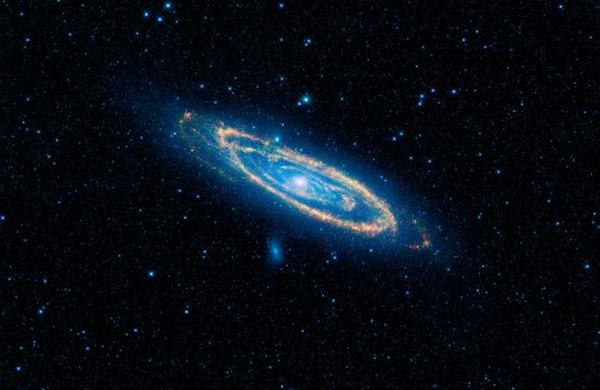
Beam us up, Scotty. There’s no signs of intelligent life out there. At least, no obvious signs, according to a recent survey performed by researchers at Penn State University. After reviewing data taken by the NASA Wide-field Infrared Survey Explorer (WISE) space telescope of over 100,000 galaxies, there appears to be little evidence that advanced, spacefaring civilizations exist in any of them.
First deployed in 2009, the WISE mission has been able to identify thousands of asteroids in our solar system and previously undiscovered star clusters in our galaxy. However, Jason T. Wright, an assistant professor of astronomy and astrophysics at the Center for Exoplanets and Habitable Worlds at Penn State University, conceived of and initiated a new field of research – using the infrared data to assist in the search for signs of extra-terrestrial civilizations.
And while their first look did not yield much in the way of results, it is an exciting new area of research and provides some very useful information on one of the greatest questions ever asked: are we alone in the universe?
“The idea behind our research is that, if an entire galaxy had been colonized by an advanced spacefaring civilization, the energy produced by that civilization’s technologies would be detectable in mid-infrared wavelengths,” said Wright, “exactly the radiation that the WISE satellite was designed to detect for other astronomical purposes.”
This logic is in keeping with the theories of Russian astronomer Nikolai Kardashev and theoretical physicist Freeman Dyson. In 1964, Kardashev proposed that a civilization’s level of technological advancement could be measured based on the amount of energy that civilization is able to utilize.
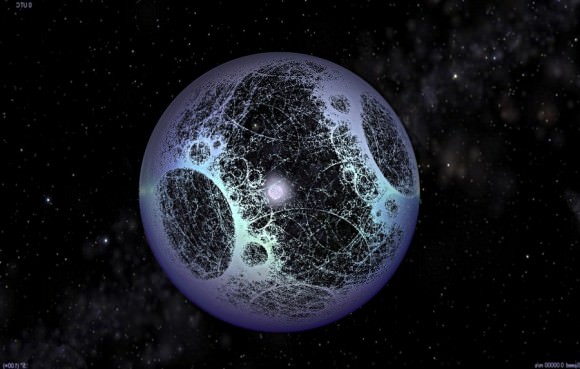
To characterize the level of extra-terrestrial development, Kardashev developed a three category system – Type I, II, and III civilizations – known as the “Kardashev Scale”. A Type I civilization uses all available resources on its home planet, while a Type II is able to harness all the energy of its star. Type III civilizations are those that are advanced enough to harness the energy of their entire galaxy.
Similarly, Dyson proposed in 1960 that advanced alien civilizations beyond Earth could be detected by the telltale evidence of their mid-infrared emissions. Believing that a sufficiently advanced civilization would be able to enclose their parent star, he believed it would be possible to search for extraterrestrials by looking for large objects radiating in the infrared range of the electromagnetic spectrum.
These thoughts were expressed in a short paper submitted to the journal Science, entitled “Search for Artificial Stellar Sources of Infrared Radiation“. In it, Dyson proposed that an advanced species would use artificial structures – now referred to as “Dyson Spheres” (though he used the term “shell” in his paper) – to intercept electromagnetic radiation with wavelengths from visible light downwards and radiating waste heat outwards as infrared radiation.
“Whether an advanced spacefaring civilization uses the large amounts of energy from its galaxy’s stars to power computers, space flight, communication, or something we can’t yet imagine, fundamental thermodynamics tells us that this energy must be radiated away as heat in the mid-infrared wavelengths,” said Wright. “This same basic physics causes your computer to radiate heat while it is turned on.”
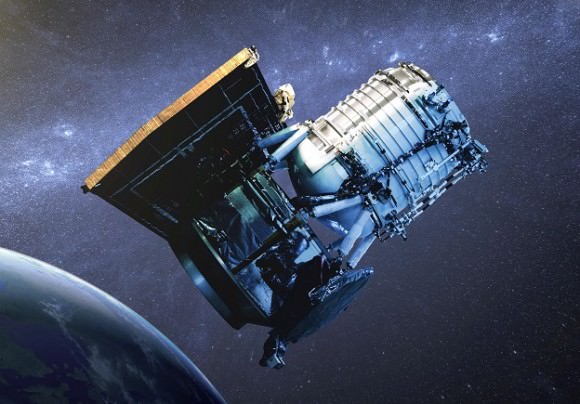
However, it was not until space-based telescopes like WISE were deployed that it became possible to make sensitive measurements of this radiation. WISE is one of three infrared missions currently in space, the other two being NASA’s Spitzer Space Telescope and the Herschel Space Observatory – a European Space Agency mission with important NASA participation.
WISE is different from these missions in that it surveys the entire sky and is designed to cast a net wide enough to catch all sorts of previously unseen cosmic interests. And there are few things more interesting than the prospect of advanced alien civilizations!
To search for them, Roger Griffith – a postbaccalaureate researcher at Penn State and the lead author of the paper – and colleagues scoured the entries in the WISE satellites database looking for evidence of a galaxy that was emitting too much mid-infrared radiation. He and his team then individually examined and categorized 100,000 of the most promising galaxy images.
And while they didn’t find any obvious signs of a Type II civilization or Dyson Spheres in any of them, they did find around 50 candidates that showed unusually high levels of mid-infrared radiation. The next step will be to confirm whether or not these signs are due to natural astronomical processes, or could be an indication of a highly advanced civilization tapping their parent star for energy.
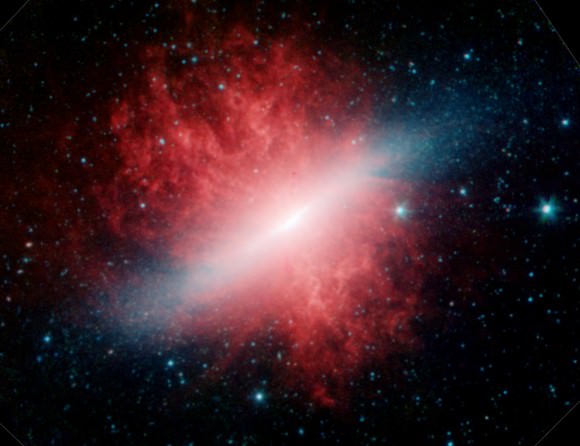
In any case, the team’s findings were quite interesting and broke new ground in what is sure to be an ongoing area of research. The only previous study, according to the G-HAT team, surveyed only about 100 galaxies, and was unable to examine them in the infrared to see how much heat they emitted. What’s more, the research may help shed some light on the burning questions about the very existence of intelligent, extra-terrestrial life in our universe.
“Our results mean that, out of the 100,000 galaxies that WISE could see in sufficient detail, none of them is widely populated by an alien civilization using most of the starlight in its galaxy for its own purposes,” said Wright. “That’s interesting because these galaxies are billions of years old, which should have been plenty of time for them to have been filled with alien civilizations, if they exist. Either they don’t exist, or they don’t yet use enough energy for us to recognize them.”
Alas, it seems we are no closer to resolving the Fermi Paradox. But for the first time, it seems that investigations into the matter are moving beyond theoretical arguments. And given time, and further refinements in our detection methods, who knows what we might find lurking out there? The universe is very, very big place, after all.
The research team’s first research paper about their Glimpsing Heat from Alien Technologies Survey (G-HAT) survey appeared in the Astrophysical Journal Supplement Series on April 15, 2015.
Further Reading: Astrophysical Journal via EurekAlert, JPL-NASA
Could We Harvest Energy From a Star?
Our civilization will need more power in the future. Count on it. The ways we use power today: for lighting, transportation, food distribution and even entertainment would have sounded hilarious and far fetched to our ancestors.
As our technology improves, our demand for power will increase. I have no idea what we’ll use it for, but I guarantee we’ll want it. Perhaps we’ll clean up the oceans, reverse global warming, turn iron into gold, or any number of activities that take massive amounts of energy. Fossil fuels won’t deliver, and they come with some undesirable side effects. Nuclear fuels will only provide so much power until they run out.
We need the ultimate in energy resources. We’ll want to harness the entire power of our star. The Soviet astronomer Nikolai Kardashev predicted that a future civilization might eventually harness the power of an entire planet. He called this a Type I civilization. A Type II would harness the entire energy output of a star. And a Type III civilization would utilize the power of their entire galaxy. So let’s consider a Type II civilization.
What would it actually take to harness 100% of the energy from a star? We’d need to construct a Dyson Sphere or Cloud and collect all the solar energy that emanates from it. But could we do better? Could we extract material directly from a star?
You bet, it’s the future!
This is an idea known as “stellar lifting”. Stealing hydrogen fuel from the Sun and using it for our futuristic energy needs. In fact, the Sun’s already doing it… poorly. Stars generate powerful magnetic fields. They twist and turn across the surface of the star, and eject hydrogen into space. But it’s just a trickle of material. To truly harness the power of the Sun, we need to get at that store of hydrogen, and speed up the extraction process.
There are a few techniques that might work. You can use lasers to heat up portions of the surface, and increase the volume of the solar wind. You could use powerful magnetic fields to carry plasma away from the Sun’s poles into space.Which ever way it happens, once we’ve got all that hydrogen. How do we use it to get energy? We could combine it with oxygen and release energy via combustion, or we could use it in our space reactors and generate power from fusion.
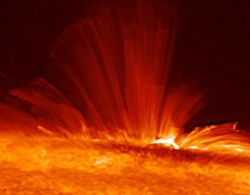
But the most efficient way is to feed it to a black hole and extract its angular momentum. A highly advanced civilization could siphon material directly from a star and send it onto the ergosphere of a rapidly spinning pet black hole.
Here’s Dr. Mark Morris, a Professor of Astronomy at UCLA. He’ll explain:
“There is this region, called the ergosphere between the event horizon and another boundary, outside. The ergosphere is a very interesting region outside the event horizon in which a variety of interesting effects can occur. For example, if we had a black hole at our disposal, we could extract energy from spinning black holes by throwing things into the ergosphere and grabbing whatever comes out at even higher speeds.”
This is known as the Penrose process, first identified by Roger Penrose in 1969. It’s theoretically possible to retrieve 29% of the energy in a rotating black hole. Unfortunately, you also slow it down. Eventually the black hole stops spinning, and you can’t get any more energy out of it. But then it might also be possible to extract energy from Hawking radiation; the slow evaporation of black holes over eons. Of course, it’s tricky business.
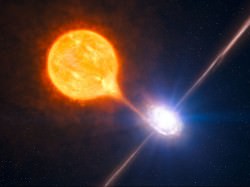
Dr. Morris continues, “There’s no inherent limitation except for the various problems working in the vicinity of a massive black hole. One can’t be anywhere near a black hole that’s actively accreting matter because the high flux of energetic particles and gamma rays. So it’s a hostile environment near most realistic black holes, so let me just say that it won’t be any time soon as far as our civilization is concerned. But maybe Type III civilizations so far beyond us that it exceeds our imagination won’t have any problem.”
A Type 3 civilization would be so advanced, with such a demand for energy, they could be extracting the material from all the stars in the galaxy and feeding it directly to black holes to harvest energy. Feeding black holes to other black holes to spin them back up again.
It’s an incomprehensible feat of galactic engineering. And yet, it’s one potential outcome of our voracious demand for energy.
Hunting for Alien Megastructures
It’s a big galaxy out there. Even the most skeptical scientist has to accept that if a civilisation like our own exists, then there’s a good chance we’re not the only one to have ever done so. When most people think about SETI (the search for extraterrestrial intellgence), they imagine someone like Ellie Arroway searching the skies for radio transmissions. But what about looking in other ways? Perhaps a highly advanced alien civilisation might build structures large enough for us to see.
Continue reading “Hunting for Alien Megastructures”




